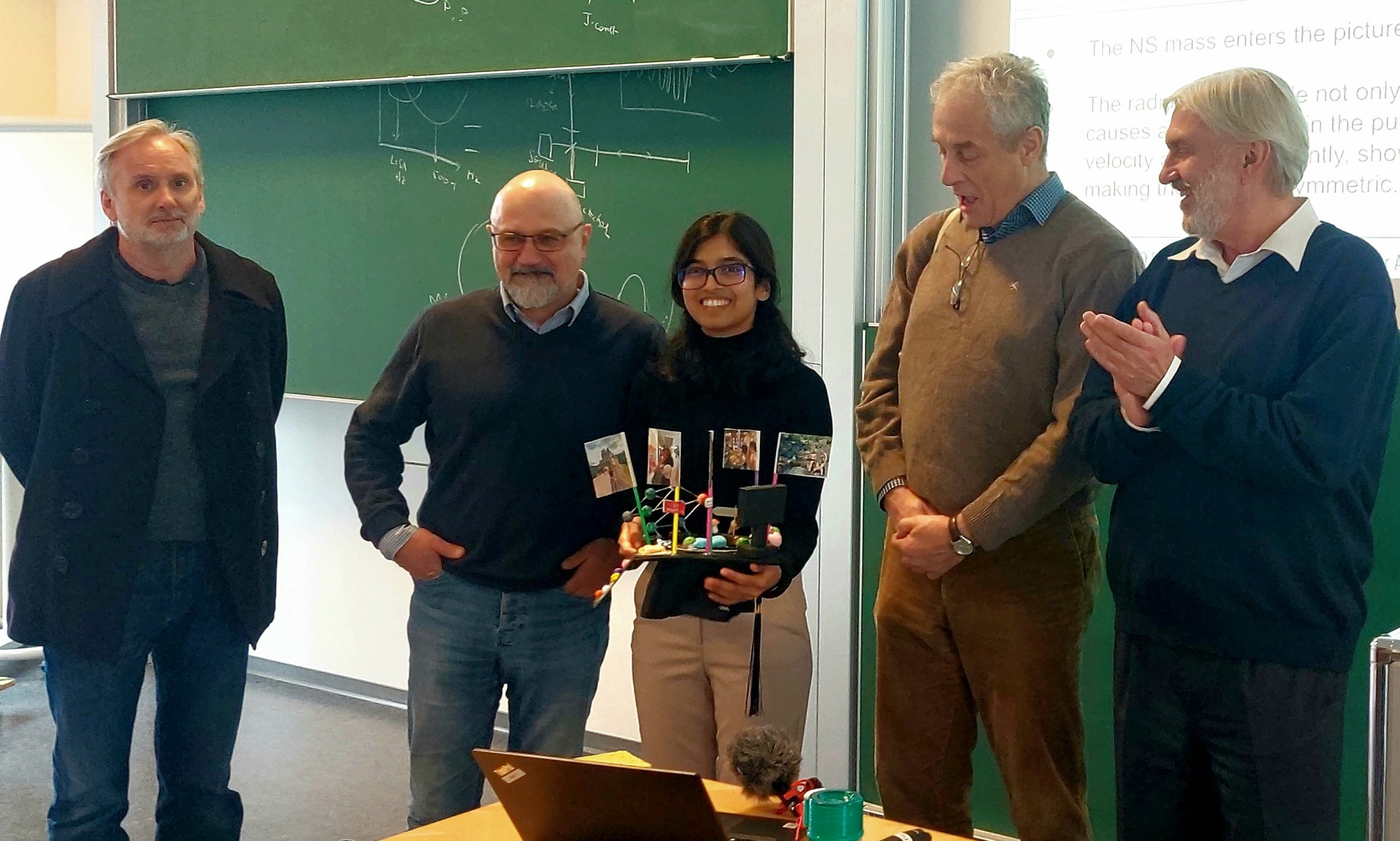April 16, 2024
Shriya Soma receives doctorate
Constraining neutron star equation of state by deep learning
Physicist Shriya Soma successfully defended her thesis on 16th April. Her PhD on constraining the neutron star equation of state using deep learning techniques was supervised by FIAS Fellows Horst Stöcker and Kai Zhou.
The equation of state (EoS), is the relationship between pressure and energy density at variable temperatures and entropies. In simpler words, it is a mathematical representation of how matter responds to changes in its environment. At extremely high densities (and temperatures), the EoS remains unknown and its determination is an on-going challenge for physicists. With central densities that reach as high as 10¹⁵ g/cm³, neutron stars serve as cosmic laboratories for the study of dense matter. Shriya Soma’s thesis focuses on neutron stars and their properties to gain a better understanding of the underlying EoS.
The deep-learning algorithm developed by Soma and her colleagues uses the macroscopic properties of neutron stars (specifically, their masses and radii) to obtain the corresponding microscopic quantities, i. e. the underlying equation of state [1,2]. When compared to supervised learning approaches on the same research problem, the proposed method possesses a natural Bayesian picture for interpretation. In such a set-up, one could include additional priors obtained from heavy ion collision experiments. Furthermore, this novel method can also be implemented in several fields faced with challenges of inverse problems.
|
Bayesian inference
Bayesian inference is a method of making statistical inferences by updating beliefs about an unknown quantity based on combining what is already known (prior knowledge) with observational data (new evidence), allowing for probabilistic predictions on the unknown. |
In addition, Soma’s thesis extends to deep learning studies for analyzing gravitational wave signals from merging binary neutron stars [3]. Here, Soma and her colleagues show for the first time that it is possible to extract the tidal deformability of the merging neutron stars. In yet another research article, Soma studies the properties of the binary neutron star merger remnant in the gravitational wave event GW170817 [4]. The radius estimates obtained from her analysis are consistent with those values from observations. Overall, Soma’s thesis presents novel methods which will prove useful in future, as more observational data is expected in the upcoming years.
|
Tidal deformabilities
When a neutron star passes close to another massive object, such as another neutron star, or a black hole, it is deformed by its tidal forces. The term "tidal deformability" is used to describe how strongly a neutron star reacts to these forces and how easily it can be deformed. It is therefore an important parameter for understanding the behavior of extremely dense states of matter in neutron stars and provide insights into the fundamental properties of astrophysical objects. |
Soma thanks everyone at FIAS, "mentors, colleagues, friends and the administration for their invaluable support over the last few years". In future, she will use the skills she learnt at FIAS at the company Peiker to use deep learning algorithms for the development of demo systems.
